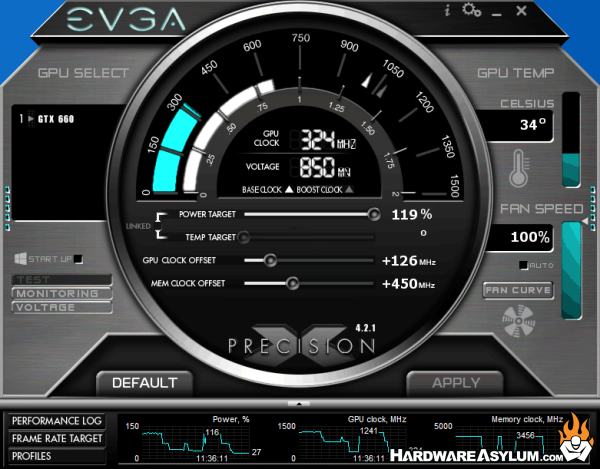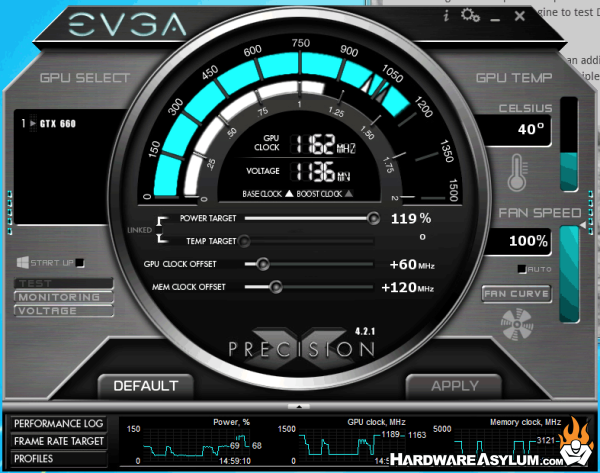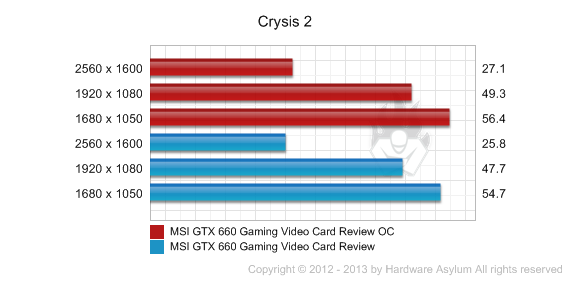MSI GTX 660 Gaming Video Card Review
Author: Dennis Garcia
Published: Wednesday, September 18, 2013
Overclocking
We had an interesting time overclocking the MSI GTX 660 Gaming. At first we started as we normally do and raised the core clock to see how much processing power we could get. The end result was an extremely good 1132Mhz (+126Mhz) on the core and 1727Mhz (+450Mhz) on memory. To test stability we used 3DMark Firestrike Extreme and 3DMark 11 and both benchmarks passed with flying colors, no hitches and no artifacts.
This is great considering that with boost the GPU core was running 1240Mhz!
This is great considering that with boost the GPU core was running 1240Mhz!

It wasn't until we started testing Vantage and Crysis 2 that we ran into issues with driver crashes. As you may have guessed we pushed things too far and had to back them down considerably. The final overclock was +60Mhz Core and +120Mhz Memory which worked out to be 1190Mhz core (Boost frequency) and 1560Mhz memory.

Due to the considerable drop in frequency all of the benchmarks in this review were run at that speed, despite our desire to run them higher.




At 60Mhz+ we cannot expect much in terms of a big performance boost but will say that even at +60 the boost frequency took the core up to 1190Mhz which is still 190Mhz more than what you get using the included MSI gaming app. The gaming app does have a few advantages in that it works on the principle of "profiles" allowing you to run the card hot-clocked like it is out of the box or downclock the card to save power and limit overall noise. Of course you could do the same with MSI Afterburner but that takes a few extra steps.
Both 3DMark benchmarks showed minor gains and Crysis 2 leveled out at +2FPS on average. This is not what we like to see from an overclock but that was all the card would do and still remain stable.
Keep in mind that overclocking is not guaranteed so your results may vary from one card to another.
Both 3DMark benchmarks showed minor gains and Crysis 2 leveled out at +2FPS on average. This is not what we like to see from an overclock but that was all the card would do and still remain stable.
Keep in mind that overclocking is not guaranteed so your results may vary from one card to another.

